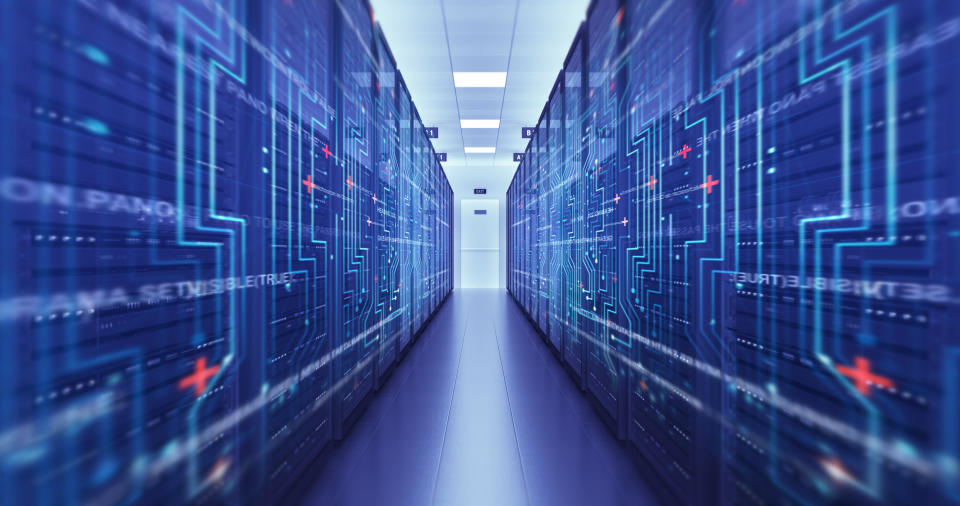'It's driving up the heat density within data centers:' Why AI and 5G are contributing to climate concerns
The increasing prevalence of artificial intelligence and 5G technology are threatening to drive up energy consumption, putting the technology sector on par with the aviation industry in the amount of carbon dioxide it releases, according to a leading researcher at Gartner.
While data centers, tasked with processing the world’s data, have made significant investments to reduce energy consumption over the last several years, David Cappuccio, Gartner VP of research, says that dynamic is likely to shift dramatically with the growing use of analytics and machine learning.
“When you start doing more and more of that, it uses a different type of computer. It’s graphic processing units, which tend to generate a lot more power use and generate a lot more heat because of it,” Cappuccio said. “It’s driving up the heat density within data centers again. So now enterprises are starting to get the same problem they had 10 years ago.
Data usage has grown dramatically over the last decade, with the widespread adoption of smartphones and the advent of streaming. That has led to an explosion in energy consumption, as data centers work to keep servers cool and operational.
At Switch (SWCH) Las Vegas, one of the largest data centers in the world, temperatures can soar up to 108 degrees Fahrenheit, without its cooling system.
“Everything that’s happening on the internet requires some energy. To generate the data, capture the data, to store the data, to compute the data, to push the data back out,” said Adam Kramer, the vice president of strategy at Switch. “As we are generating and creating more data, and we have more and more need for servers, it’s creating a need for more and more power.”

‘Genie’s out of the bottle’
Data centers consume roughly 2% of the world’s electricity right now. But that number is expected to soar to 8% by 2030, with the amount of data produced expected to grow five-fold to 175 zettabytes, in the next five years. Research from Hewlett Packard Enterprise (HPE) suggests just 6% of data created is actually in use today.
“Genie's out of the bottle. How do you get people to stop using social media? How do you get people to stop automating more and more of their homes? How do you get people to stop using Alexa?” said Cappuccio. “People are falling in love with technology ,and what they fall in love with is how easy it is to use. It's almost like turning out tap water now.”
Major cloud providers have mapped out their own ambitions to reduce their carbon footprint. Earlier this year, Microsoft (MSFT) announced it would aim to be carbon neutral by 2030, in part by developing a tool that helps customers understand the carbon impact of their Azure workloads. Its data centers already utilize solar, wind, and hydro power. In 2018, the company began experimenting with underwater data centers to reduce cooling and energy costs. Alphabet’s (GOOG) Google has increased its renewable energy portfolio by 40%, and leveraged its machine learning technology to optimize its data centers, while Amazon’s (AMZN) AWS, the largest cloud provider has also committed itself to becoming 100 percent renewable by 2030. It recently announced investments in solar and wind energy projects in Australia, Europe, and the U.S.
Switch, whose clients include eBay (EBAY), AWS, PayPal (PYPL), and Boeing (BA), powers its 3.5 million square foot facility, solely by solar. Its data center in the Nevada desert generates enough electricity to keep the lights on in 22,000 homes, making Switch 100 percent renewable.
A recent study published in the journal Science, shows those efforts have been effective. While the compute capacity of data centers grew sixfold between 2018 and 2010, the study found that energy usage at those centers grew just 6%.
A shift to smaller ‘distributed’ data centers
But Cappuccio says the adoption of new technologies, including self-driving cars and the “internet of things” will present new challenges for data centers, as the amount of data created reaches unprecedented levels. Even as major cloud providers look to develop more a more eco-friendly footprint, Cappuccio expects a shift away from large data centers to a large number of smaller facilities to improve efficiency.
“Now as that plays out over time, what you can see is not many large data centers concentrating all of this compute in one place,” Cappuccio said. “You're going to see many distributed data centers around the world delivering compute where it needs to be delivered ... So they've got to put workloads in different places.”
Akiko Fujita is an anchor and reporter for Yahoo Finance. Follow her on Twitter @AkikoFujita
